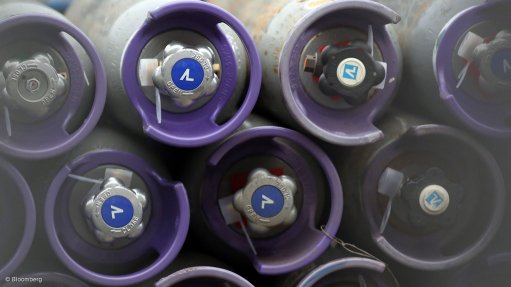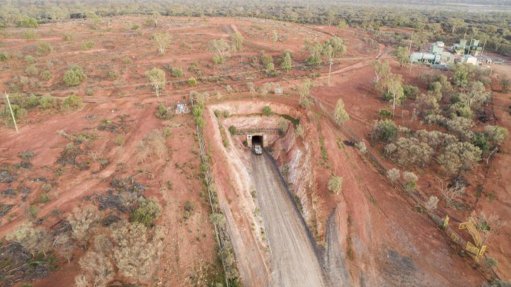Sanctions still hamper Zim diamond exports
One of the biggest challenges still facing Zimbabwe’s diamond mining industry is the sanctions imposed by the US and the European Union (EU) on the export of rough diamonds from the country’s mines, says diamond dealer and manufacturer Ernest Blom Diamonds owner Ernest Blom who is also president of the World Federation of Diamond Bourses.
EU sanctions were first imposed in 2002, citing as motivating factors political violence, human rights abuses and the failure to hold free and fair elections, while the US has imposed sanctions since 2003 on about 100 individuals, including President Robert Mugabe, State-owned enterprises and various other enterprises and farms, citing government and its supporters as undermining democratic institutions and processes in Zimbabwe.
EU and US officials have been quoted in the media as saying that, should the latest round of elections in Zimbabwe, which was held on July 31, be free and fair, they are likely to revisit and reconsider the sanctions on Mugabe.
While some sanctions have been lifted, the remaining sanctions make it difficult for the country’s mines to freely sell their diamonds, notwithstanding that they comply with the Kimberley Process – the global certification scheme established to prevent conflict diamonds from reaching the market.
Blom maintains that, as a net supplier of rough diamonds to the international diamond market, Zimbabwe has the potential to become a substantial player in this market.
“Zimbabwe can be successful, particularly in the lower-range diamond markets in India, as the country has the necessary expertise and economical polishing facilities to absorb production,” he notes.
Blom believes that the mines in the Marange diamond fields, located about 90 km south-west of Zimbawe’s third- largest city, Mutare, “most probably have the highest yields in terms of carats, but the diamonds are of a lower quality – in turn, the Marange fields and Zimbabwe have the potential to become the biggest global suppliers by volume”.
“What this means is that, although the rough diamonds yield a lower price per carat than those of an average alluvial mine, the higher volumes in terms of carats yielded make up for it,” he adds.
While most diamond mines in Zimbabwe are comparable to other alluvial or kimberlite mines in terms of diamond grades, the mines in the Marange diamond field are a unique geological phenomenon, with their high yields per ton, and the unique coating and chemical structure of a Marange diamond making it easily identifiable.
Although diamond mining in Zimbabwe is still in its infancy, there are many areas that still have to be explored before the full potential of diamond mining is realised, which augurs well for the country’s diamond production figures.
Meanwhile, Blom notes that while beneficiation takes place on a small scale in Zimbabwe, with only a few operational diamond-beneficiating factories, there is a strong desire and endeavour to beneficiate the raw diamonds and thereby create jobs – which is similar to the way in which diamond beneficiation has been successfully exploited in South Africa and Botswana.
Blom does not think the state of the diamond mining industry in Zimbabwe needs remediation, as he says the diamond mining companies in the country are operating in a highly professional manner and they use mining methods that adhere to world-class standards and that have good environmental protection intentions.
During the beginning of the diamond rush, in Marange, in 2006, many unofficial alluvial diggers sprang up. However, the areas are now well managed, protected and controlled, owing to better security, access control and fencing.
Having always been opposed to export taxes in the global mining industry, Blom highlights that export taxes have a negative effect on the economic sustain- ability of diamond mines, more so in countries where export taxes are exceptionally high.
While a tax on rough diamonds, be it a mining or export tax, has no bearing on their selling price, any tax imposed is absorbed by the mining company, which can affect a mine’s sustainability.
Blom notes that it is in everyone’s interest to keep the mines economically sustain- able “because, without mines, we do not have an industry and, without the dealers and beneficiators, we do not have the demand.”
Comments
Press Office
Announcements
What's On
Subscribe to improve your user experience...
Option 1 (equivalent of R125 a month):
Receive a weekly copy of Creamer Media's Engineering News & Mining Weekly magazine
(print copy for those in South Africa and e-magazine for those outside of South Africa)
Receive daily email newsletters
Access to full search results
Access archive of magazine back copies
Access to Projects in Progress
Access to ONE Research Report of your choice in PDF format
Option 2 (equivalent of R375 a month):
All benefits from Option 1
PLUS
Access to Creamer Media's Research Channel Africa for ALL Research Reports, in PDF format, on various industrial and mining sectors
including Electricity; Water; Energy Transition; Hydrogen; Roads, Rail and Ports; Coal; Gold; Platinum; Battery Metals; etc.
Already a subscriber?
Forgotten your password?
Receive weekly copy of Creamer Media's Engineering News & Mining Weekly magazine (print copy for those in South Africa and e-magazine for those outside of South Africa)
➕
Recieve daily email newsletters
➕
Access to full search results
➕
Access archive of magazine back copies
➕
Access to Projects in Progress
➕
Access to ONE Research Report of your choice in PDF format
RESEARCH CHANNEL AFRICA
R4500 (equivalent of R375 a month)
SUBSCRIBEAll benefits from Option 1
➕
Access to Creamer Media's Research Channel Africa for ALL Research Reports on various industrial and mining sectors, in PDF format, including on:
Electricity
➕
Water
➕
Energy Transition
➕
Hydrogen
➕
Roads, Rail and Ports
➕
Coal
➕
Gold
➕
Platinum
➕
Battery Metals
➕
etc.
Receive all benefits from Option 1 or Option 2 delivered to numerous people at your company
➕
Multiple User names and Passwords for simultaneous log-ins
➕
Intranet integration access to all in your organisation


















